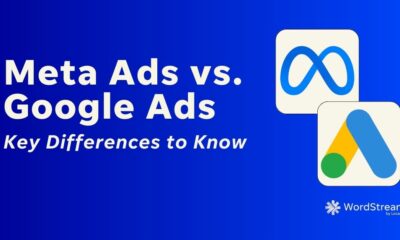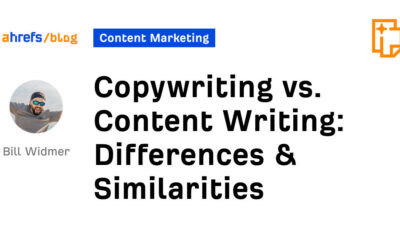SEO
Differences & How to Use Them

The main difference between push and pull marketing is that push marketing focuses on pushing a product to customers, whereas pull marketing focuses on getting customers to come to you.
In this guide, you’ll learn some examples of push and pull marketing, which is more effective, and how you can combine both strategies together for your business.
What is pull marketing?
Pull marketing is a marketing strategy that focuses on getting your target customers to discover your brand, products, and services.
Pull marketing tactics
Here are three examples of pull marketing tactics.
1. Search engine optimization (SEO)
Customers turn to Google whenever they’re looking for an answer to a question or solution to a problem. Along the way, while searching, they discover many brands, products, and services.
If you want your brand to appear for these queries, you’ll have to do SEO. SEO is the practice of optimizing your website and its webpages to rank higher on search engines.
Broadly speaking, SEO involves:
- Discovering the words and phrases your customers use to 1) describe the problems your product solves and 2) find your brand or products similar to your brand.
- Optimizing your website and its webpages to stand a higher chance of ranking for these keywords.
- Getting people to link to your pages, either building them or earning them organically.
If you want to learn more about SEO, I highly recommend watching this course in its entirety.
2. Word of mouth
Customers who like your product will tell their friends and family about it. And research from Nielsen shows that 83% of people trust recommendations from their friends and family.
Getting more positive word of mouth is mostly out of your control. However, you can attempt to influence or encourage your customers to tell their friends about you.
This means creating a great product, building a likable and well-respected brand, and regularly engaging with your customers.
Recommended reading: Word-of-Mouth Marketing: A Simple Tried & Tested Guide
3. Social media
While paid advertising on social media is considered push marketing, the organic side is pull marketing. That means:
- Creating fun, engaging, and helpful content.
- Building a following.
- Interacting with your audience.
Recommended reading: What Is Social Media Marketing?
What is push marketing?
Push marketing is a marketing strategy that focuses on placing your products or services in front of your target customers.
Push marketing tactics
Here are three examples of push marketing tactics.
1. Cold emailing
Cold emailing means sending an email to someone with whom you have no previous relationship to get something from them. This can be promoting a new product, acquiring links, and more.
This is typically done by building up a list of prospects, finding their emails, and then reaching out to them.
2. Direct mail
The offline, traditional version of cold outreach. Instead of an email, marketers send physical mails to actual homes in order to introduce a new product or offering.
While a simple mail can be used, other variations like lumpy mails (i.e., mails that are not flat) and mails with actual money have also been sent to capture attention and prevent the mail from being thrown into the wastepaper basket.
3. Advertising
Whether it’s a physical billboard or an advertisement on Facebook, ads are considered push marketing because they “interrupt” you to show you a product or service.
Nobody goes around looking for ads; ads are usually shown when someone is in the midst of doing something.
Pull vs. push marketing: Which is more effective?
Neither push nor pull marketing is more effective than the other. Both are legitimate marketing strategies.
Which one you use depends on your customer profile, your goals, and the business stage you’re at.
Here are three scenarios to guide you in the right direction:
Scenario 1. You’re launching a new product/startup
In this scenario, no one knows who you are. You have no brand, no customers, and no base of content. Therefore, at this stage, you likely have to do things that don’t scale. You have to go out there and get customers.
Typically, these involve push marketing tactics such as cold emailing other businesses (Intercom, Birchbox), attending events (Pinterest), going door to door (Airbnb, Alibaba Group), and even flyers (Groupon).
This isn’t to say that pull marketing won’t work for a business at this stage. But it does take time for a company to build its brand, its content, and rank high on Google for queries that matter.
Ideally, you should be executing both strategies at the same time—acquiring your first customers and also building your brand for the future.
In fact, research shows that most companies will achieve the greatest marketing effectiveness if they invest around 60% into brand-building and 40% into sales-boosting campaigns:

Scenario 2. You’re promoting a one-time offer/short-term campaign
Pull marketing tactics take time. The campaign may be over even before its effect kicks in.
In such a scenario, you may want to consider using push marketing tactics like ads or influencer marketing.
Scenario 3. You’re building for the long term
Pull marketing tactics tend to compound over time. Take SEO, for example. For as long as your articles rank on Google, you’ll receive consistent, passive, and organic search traffic.

The reason is most pull marketing tactics work like a flywheel. In the beginning, you won’t see any huge effects as the flywheel is getting “pushed.” But as you go along, it becomes much easier to get results.
Here’s an illustration of how word of mouth works like a flywheel:

Comparatively, if you’re using a push marketing tactic, e.g., advertising, traffic stops the moment you turn it off.
Thanks to the compounding effect, pull marketing tactics are often cheaper in the long run. For example, our website gets an estimated 1.2 million search visits per month.

If we had to acquire this traffic via Google Ads, it would cost us $1.3 million per month. Considering that our content marketing team isn’t paid $1.3 million in salaries, it’s reasonable to say pull marketing tactics are cheaper and a better long-term investment.
Pull and push marketing: combining them together
The best businesses use both pull and push marketing to complement each other. After all, if both strategies work, why wouldn’t you want to do both?
Here are some ways you can combine both pull and push marketing together:
1. Generate leads with pull marketing and close them with push marketing
This is a strategy used by many companies like HubSpot. The idea is simple:
- Create content that ranks high on search engines for their target queries (pull marketing)
- Get these readers to sign up for an email list, usually via an incentive
- Later on, sales team will reach out to these prospects via email or phone (push marketing)
For example, HubSpot’s post on writing an effective email gets around 28,000 search visits per month and ranks for over 1,700 organic keywords:

When someone discovers the article and begins reading it, HubSpot encourages them to sign up for its email list via a “content upgrade”:

Once the prospect has handed over their email address, HubSpot can now contact them via its sales team.
Of course, its sales team doesn’t reach out to everyone. There are just too many people, and not everyone is willing and able to buy. What HubSpot does—and many companies do too—is “score” these leads.
Basically, each prospect is given a score based on the actions they take. So someone who is downloading a beginner’s guide to email marketing is probably relatively new to marketing and is not an ideal prospect to reach out to right now.
Of course, they may be a good prospect in the future if they continue to consume HubSpot’s content and download more and more advanced guides.
Comparatively, someone who opts in for HubSpot’s free marketing dashboard tool is more likely to be a prospect who makes a purchase:

Learn more about how to execute this strategy step by step with our guide on inbound marketing.
2. Run social ads to promote your content
Your content is not going to promote itself. You need to help people discover it by, perhaps, putting it right in front of them.
And one of the most reliable ways to do that is to run ads.
That’s why we run ads for most, if not all, of our blog posts. Since we take an average of 10–20 hours to create each piece, it’ll be a waste if no one sees it.
Here’s one of our Facebook ads promoting our post on the best marketing Facebook groups:

If Facebook ads are too competitive for you, remember there are also other ad platforms you can consider. For example, we also promote our content via Quora and Twitter ads:

3. Target your ads to lookalike audiences built from your “pulled” audience
If you’re using tactic #2 and want to reach new people who are likely to be interested in your content, you can consider creating a lookalike audience.
A lookalike audience is one that shares similar characteristics with whichever “source audience” you upload on the ad platform.

Since your “pulled” audience is made up of people who are actively seeking out the type of content you’re creating, they’re perfect as your “source audience.”
4. Send outreach emails to boost awareness of your existing content
Links are an important ranking factor. And one way to get more of them is to build them. This means reaching out to other websites and persuading them to link to you.
To start, you need a list of websites to reach out to. One way to find these websites is to find ones that cover the same topics as you. Here’s how:
- Go to Ahrefs’ Content Explorer
- Search for a term related to your article

For example, searching for “home workout” gives us 290,125 pages. But that’s too many pages to look through, so let’s add a few filters to narrow things down:
- Set Language filter to English (or the language you write in)
- Set a DR filter to a range of 30–90 (or a range you’re comfortable reaching out to)
- Set a Website traffic filter to 500+
- Set a Words filter to 500+
- Filter explicit results On
- Check Exclude homepages
- Check Exclude subdomains
- Check One page per domain (we don’t need to reach out to each site more than once)

This brings us down to around 9,000 pages. If you want to narrow the list down even further, play around with the filters.
Once you’ve done so, find the email address of the website owner. Then reach out to them to see if they can link to you.
We have a video that covers the link building process from start to finish, so I recommend watching it:
https://www.youtube.com/watch?v=C5ddo63kHHI
Final thoughts
Neither strategy is better than the other. Depending on the scenario and your goals, one can be more suitable than the other.
But the best businesses don’t discriminate between the two strategies. Instead, they combine the strategies for greater effectiveness.
Did I miss out on anything about pull marketing? Let me know on Twitter.
















You must be logged in to post a comment Login